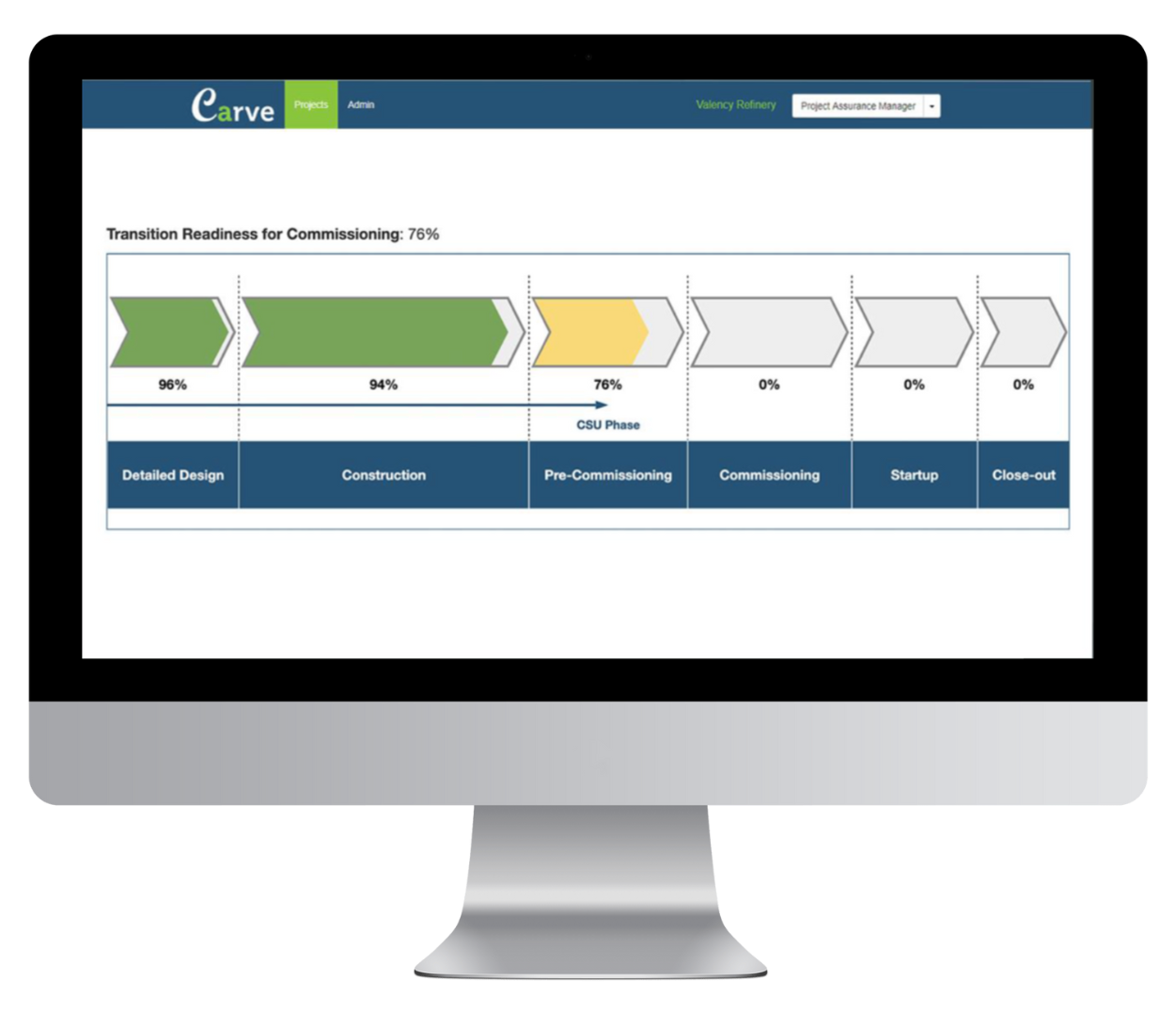The success of capital project delivery relies on a smooth handover, as any delays, errors, or miscommunications during this phase can lead to increased costs and operational delays. Operational readiness ensures that personnel, systems, equipment, and processes are fully aligned to achieve schedule certainty and operational excellence from day one. This guide offers practical insights and proven strategies for ensuring a smooth transition in industrial projects, emphasizing Factory Acceptance Testing (FAT), Site Acceptance Testing (SAT), comprehensive turnover packages, and readiness assessments.
What is Operational Readiness?
Operational readiness is the process of preparing all components of a project—people, systems, equipment, and processes—for safe and efficient startup right from the beginning. It addresses that each element adheres to safety regulations, performance standards, and compliance requirements.
A well-developed operational readiness plan helps mitigate risks, prevent costly delays, and improve productivity, creating a foundation for long-term project success. Through comprehensive checklists, clear acceptance criteria, and standardized testing methods, teams can enable a smooth transition to full operational status.

Essential Checklists and Documentation for Operational Readiness
Document control and checklists play a central role in operational readiness, helping teams to track and verify key milestones. By tracking and verifying each stage of readiness, these tools help teams address potential issues early, reducing risks related to safety, compliance, and unexpected delays. The following are essential elements that support effective project handovers:
- Turnover Packages: These packages include all required documentation that verifies equipment, and systems are in line with project standards. They often include inspection and testing reports, and certification records, providing a comprehensive overview of the project’s progress and confirming that every component is ready for commissioning.
- Acceptance Criteria: Defined early in the project, acceptance criteria set clear standards that equipment must meet to gain approval. Key items in these criteria include Factory Acceptance Testing (FAT) and Site Acceptance Testing (SAT), which act as essential checkpoints to ensure equipment meets necessary requirements both at the supplier location and at site. FAT and SAT allow teams to verify that systems are not only functional but also safe and fully aligned with design specifications and regulatory standards.
- Deviation Lists: These lists document minor faults or variances that, while not preventing equipment from being deployed, may need future adjustments. A well-maintained deviation list enables teams to manage outstanding issues effectively, minimizing potential risks during start-up.
Factory Acceptance Testing (FAT)
Factory Acceptance Testing (FAT) is conducted at the manufacturer’s site before the equipment is transported to the project location. This testing process allows for early identification and resolution of potential issues, ensuring that the equipment meets specific performance and safety standards under controlled conditions. Key aspects of FAT include:
- Approval and Checklist Requirements: Includes detailed safety, performance, and compliance standards, checklists that help stakeholders confirm that equipment aligns with contractual requirements.
- Defining Approval Parameters: This includes criteria like performance thresholds and safety features, which provide a consistent evaluation standard and allow for adjustments pre-delivery, saving time and costs.
- Deviation Lists: Including any identified issues, deviation lists help maintain transparency in equipment quality and serve as a reference for future troubleshooting.
Site Acceptance Testing (SAT)
Once the equipment arrives at the project site, it undergoes Site Acceptance Testing (SAT) to verify its functionality in real-world conditions and ensure smooth integration with other systems. Key aspects of SAT include:
- On-Site Functionality Checks: SAT verifies that the equipment works as intended on-site, checking compatibility with other systems and communication with site-specific technologies like the Manufacturing Execution System (MES).
- Operational Testing: This phase tests the equipment under real operating conditions, environmental factors, and loads, revealing any hidden issues not detected during FAT.
- Final Approval for Operation: After successfully completing SAT, the equipment is approved for full integration into site operations, indicating it meets all performance and safety standards.
Conducting a Commissioning & Operational Readiness (COR) Assessment
At Valency, we support companies in preparing for a smooth project handover through our phased-gate Commissioning & Operational Readiness (COR) Assessments. This assessment ensures that all readiness elements are addressed, covering areas such as equipment preparation, personnel training, and safety protocols, and reducing risks before operational start-up. Our COR Assessment offers key benefits, including improved team alignment, enhanced schedule performance, and minimized optimism bias.

To support our clients, we provide a range of services designed to strengthen project assurance. Our offerings include expert facilitation services for COR assessments, ensuring a thorough and unbiased review of readiness factors. We also offer Carve, a cloud-based platform for managing Commissioning & Operational Readiness, which enables teams to track progress and maintain alignment across all project phases.
Get started by joining our free webinar, Introduction to Commissioning & Operational Readiness (COR) Assessment, on February 13, 2025, or reach out to us at for more information.
Conclusion
Operational readiness is essential for successful capital projects, ensuring smooth handovers and timely start-ups. By including FAT and SAT, preparing comprehensive turnover packages, setting clear acceptance criteria, and conducting COR assessments, teams can reduce risks, prevent delays, and lay the groundwork for long-term success. A strong handover strategy enables project teams to transition confidently from construction to full operation, maximizing value and efficiency.
